READY TO GET STARTED?
REQUEST A FREE ESTIMATE
Fill out the form below or call (888) 466-7849 for a free, no-obligation estimate.

When a cockroach is seen inside your house, the first reaction is to figure out how to get it out; and the second is how to prevent it from coming back inside in the future! Understanding the difference between and identifying common roach species can help ensure proper treatment and prevention for your home, keeping your family and property safe and healthy. Here we break down the three most common roaches that could be infesting your home.
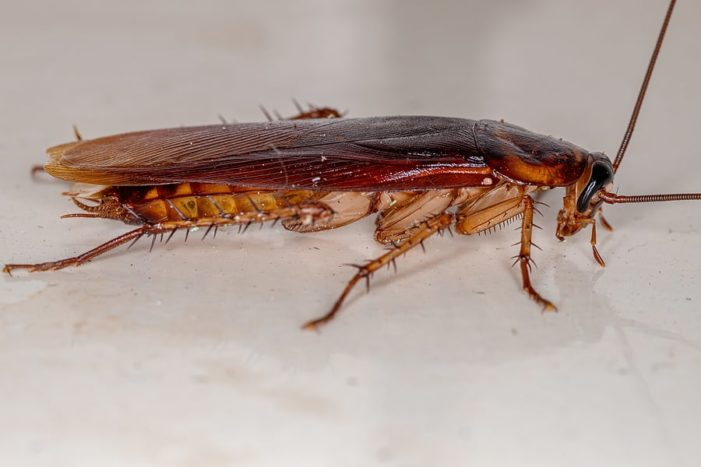
The American cockroach is the largest species in the U.S. These pests are reddish-brown with a shield-like structure that covers their head. Both males and females have wings and can fly short distances. They are also considered the fastest running insects, as they will quickly scamper out of sight when someone enters the room! While these roaches prefer warmer temperatures, they can survive the cold, often looking indoors for warmth. Common places American cockroaches are found are in basements, woodpiles, attics, and crawlspaces.
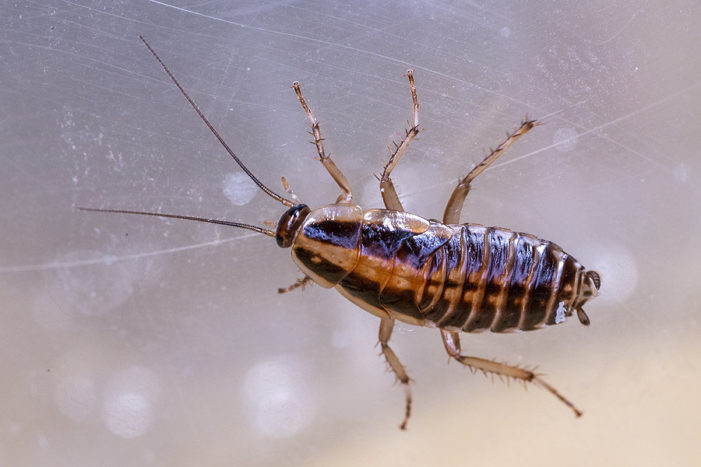
A very recognizable cockroach, the German cockroach is tan with dark brown parallel stripes on the back of its upper thorax. Smaller than the American roach, German roaches measure about ½” to 5/8”. They produce more eggs than any other roach species. While they do have wings, they rarely fly and prefer to run instead. German cockroaches prefer warmer environments, such as bathrooms or basements, but typically can be found in areas where people eat, such as the kitchen.
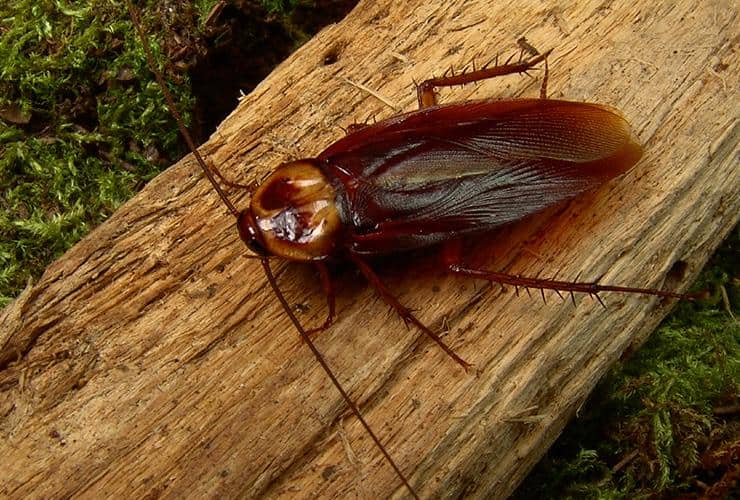
Smokybrown cockroaches are dark cherry or red with a long body length of around 1.5 inches. These roaches prefer areas of humidity and will shelter in neighborhoods with mature hardwood trees to protect them from the winds. Usually active at night, these cockroaches can be found in warm habitats such as tree holes, under mulch, and in sheds.
To avoid any type of cockroach, every homeowner should take preventative measures to keep them out of your home. Some roach prevention tips include:
If you have an issue with roaches, call your local pest control provider who can help properly identify the type of roach(es), locate points of entry, place preventative measures, and effectively eliminate them.
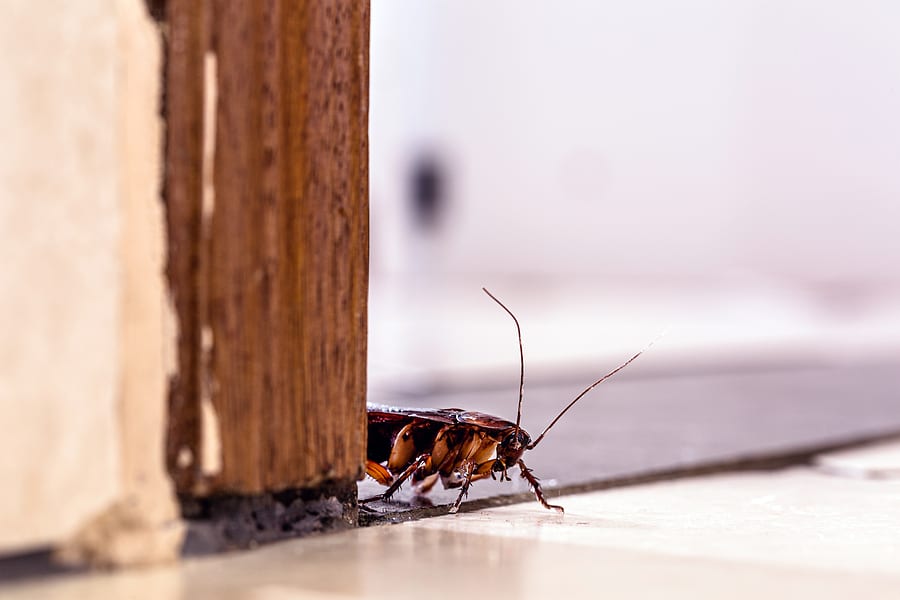
The last thing a homeowner wants to deal with is a pest infestation. One of the most common household pests is the cockroach, multiplying at a rapid rate and taking over in practically no time. The most common roaches found in households are American cockroaches, German cockroaches, and brown-banded cockroaches. Just because you see roaches in your home doesn’t mean you live in a dirty house; what attracts cockroaches may surprise you! Here are 5 common ways to attract cockroaches and how to prevent them.
Roaches thrive in dark, warm, moist, humid environments. Some of the most common sources of water in your home include leaky pipes under sinks and tubs, damp basements, AC units that leak, roof leaks, standing water, and piles of wet leaves. It is important to manage any moisture problems as soon as possible. Routinely inspect these areas of your home for leaks and fix them immediately. Consider enclosing your crawlspace to help control moisture under your home. Make sure gutters are functioning and downspouts are pointed away from foundations. Consider installing gutter guards to help prevent clogs.
Roaches will also come into your home in search of food and they will eat anything they can find. Roaches will forage in the garbage can for food scraps, grab any crumbs or food residue left on counters or floors, and can even chew through thin plastic or cardboard food containers. Make sure to clean your floors regularly by sweeping, mopping, and vacuuming. Wipe down countertops and stoves each night. Wash dishes nightly and empty the garbage regularly. Store food in plastic or glass containers rather than cardboard boxes.
One of the main things roaches eat are fibrous, organic materials found in paper and cardboard. Roaches love to feed on cardboard storage boxes that go undisturbed for long periods of time in attics, garages, and basements. Declutter as much as possible, getting rid of old boxes, newspapers, and magazines. Try to use plastic storage containers rather than cardboard boxes when possible.
Roaches don’t just get their food and water from humans. They are notorious for hijacking pet food and water bowls, especially at night, in their quest for survival. Try to feed your pets multiple times throughout the day rather than once at night. Don’t leave pet food or water bowls out overnight. Store pet food in airtight plastic containers rather than pet food bags. Clean up any spilled pet food and water, especially at night.
If your neighbors have a problem with cockroaches, there is a good chance you’ll end up with them, as well. This is especially true for apartments and other attached homes but can also occur with single family homes that are in close proximity to each other. Unfortunately, there isn’t much you can do to prevent your neighbors from getting an infestation; but you can take the above preventative steps and schedule routine pest control for your home to help keep them away.
Roaches can be extremely difficult to control and eliminate once they have established themselves in your home. If you have a problem with cockroaches or any other pests, contact a reliable pest control company who can identify the type of pest you are dealing with and provide you with an appropriate treatment and prevention plan.
Preventing a Mosquito Infestation
When Should You Start Fall Lawn Care?
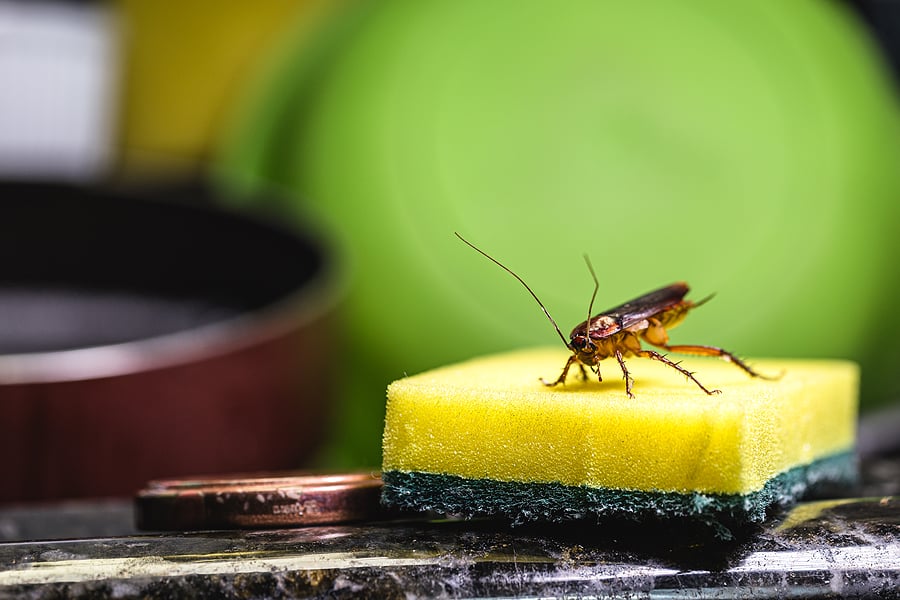
Cockroaches are household pests known for spreading bacteria and triggering allergies and asthma. These nocturnal pests come out at night to feed and hide in cracks and crevices during the day. Roaches are attracted to moisture and are most commonly found in bathrooms, kitchens, laundry rooms, basements, and drains. Because they are nocturnal, you may not notice you have a roach problem until a full blown cockroach infestation has set in. Spotting the signs of cockroaches can help you head off an infestation before it gets out of hand. Here are 7 signs you may have cockroaches.
If your neighbors mention having a roach problem, especially if you live in an apartment, condo, or townhouse, the odds are likely that they will make their way over to your home, as well. One way to help prevent this is by getting rid of what attracts roaches in your home. Don’t put open food containers in the trash; don’t leave crumbs on the floor; clean up messes as they happen; keep garbage cans sealed; and try not to store outdoor trash cans near your home.
Roaches are attracted to moisture so they are often found in areas of high moisture in your home. In these areas, they will often produce dark, irregularly-shaped smear marks as they rest or crawl along walls. These smears are often seen on horizontal surfaces and where the wall and floor meet.
Roaches leave droppings behind wherever they are. The size and shape of droppings vary between species. Some species leave behind a small brown stain. German cockroaches leave behind pepper-like specks that can also resemble coffee grounds. The larger American cockroach species leaves behind droppings closer to a grain of rice. The most common places to check for droppings are floor corners, cabinets, under the fridge, and under the stove. It is important to clean any droppings up when you find them as they are known to spread bacteria.
Egg casings are long, hollow, light brown tubes that hold cockroach eggs, anywhere from 20 to 50 at a time. Although most species leave egg casings behind once the eggs are laid, some species actually carry them with them until their offspring hatch. Egg casings are usually found at the base of the refrigerator, in cabinets that store food, and near leaky pipes. If you find a casing that still has eggs in it, dispose of it by flushing it down the toilet.
Roaches and their feces give off a musky, unpleasant odor. While one roach usually doesn’t emit a strong enough odor to be detected by humans, when larger numbers of roaches get together the smell gets stronger and more easily detected. While the smell is usually associated with live roaches, dead cockroaches can also emit the odor as part of the decomposition process.
The feces and exoskeleton of cockroaches contain proteins that can trigger allergies and asthma. If you don’t usually have allergies and have symptoms appear without a known trigger; or your current allergy and asthma symptoms seem to get worse without a known trigger this may indicate the presence of cockroaches in your home. Symptoms include stuffy nose, wheezing, red itching eyes, shortness of breath, chest tightness, and the increased use of your inhaler.
If you see one roach, the odds are likely that there are many others present. Roaches are nocturnal and usually spotted at night. If you are seeing roaches during the day, overcrowding from an infestation may be forcing them out in the open.
The best way to avoid a roach infestation is to prevent them in the first place. Prevent cockroaches by:
If you have a problem with roaches or any other pest, contact your local pest control company for a free analysis and comprehensive treatment plan.
Bed Bugs: Where Do They Come From?
How to Prevent Little Black Ants
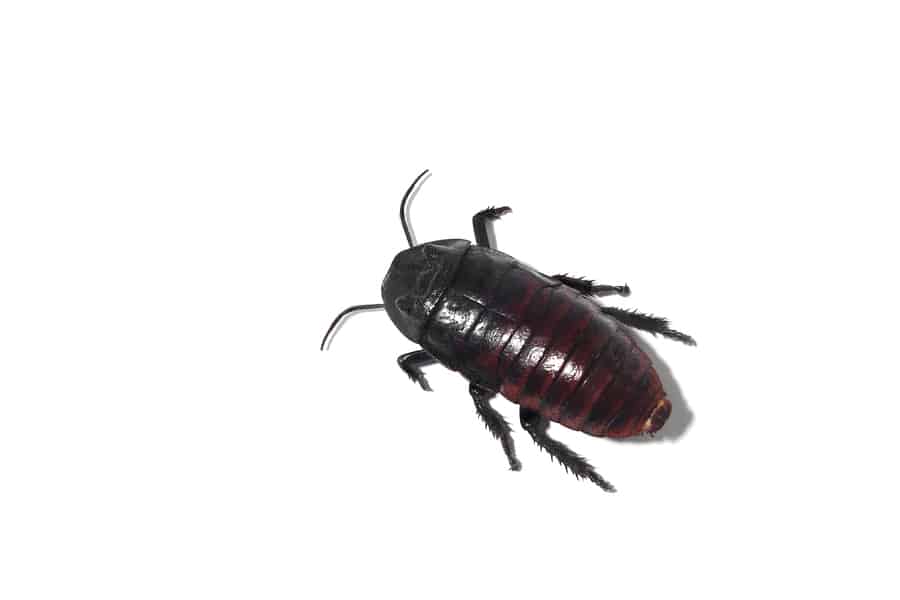
One of the lesser known species of cockroaches, the oriental cockroach (Blatta orientalis), also known as the black beetle cockroach and the waterbug, is actually one of the largest next to its cousin, the American cockroach. These pests are great at hiding and fitting into tight locations and have adapted to thrive both indoors and outdoors. Let’s take a look at how to identify Oriental cockroaches, as well as some cockroach prevention tips.
The Oriental cockroach is dark brown to nearly black in color with a smooth shiny exoskeleton. Although not quite as big as American cockroaches, these bugs do get up to 1 inch in length. Males are slightly shorter than females with stubbed wings and females are longer and skinnier without wings.
These roaches are found throughout the United States and prefer warm, moist, dark locations. They thrive outdoors, often residing under piles of leaves, mulch, stone, wood, flower beds, and debris. They will travel through sewers and can come into your home through pipes and drains. Indoors, they can be found in rarely used sink drains, garbage disposals, under cabinets with plumbing, and in bathroom voids.
Oriental roaches are omnivores, eating nearly any type of food source but preferring decaying plants and rotting garbage. They will also make do with crumbs, pet food, and leftover human food, too. They are very dependent on water which is why they are usually found in areas with high moisture. They can survive up to 1 month with no food but only 2 weeks without water.
These cockroaches are slower than most of their counterparts. They prefer to be active outdoors and are nocturnal. Males have wings but don’t fly. They have a lifespan of 1 to 6 months and their reproduction is seasonal – they produce more eggs in the spring and summer than they do the rest of the year.
Oriental cockroaches are dangerous to humans as they are known to transmit bacteria such as E. coli and salmonella. Because they eat decaying food and other material, they can contaminate food and other surfaces with the pathogens picked up from their food sources. They also excrete odors which can trigger allergies and asthma in those affected.
There are 3 main signs of Oriental cockroaches in your home:
If you have a problem with cockroaches of any kind, contact a professional pest control company for proper identification, potential points of entry, and the most up to date treatment options available.
Kudzu Bugs vs. Brown Marmorated Stink Bug: What’s the Difference?
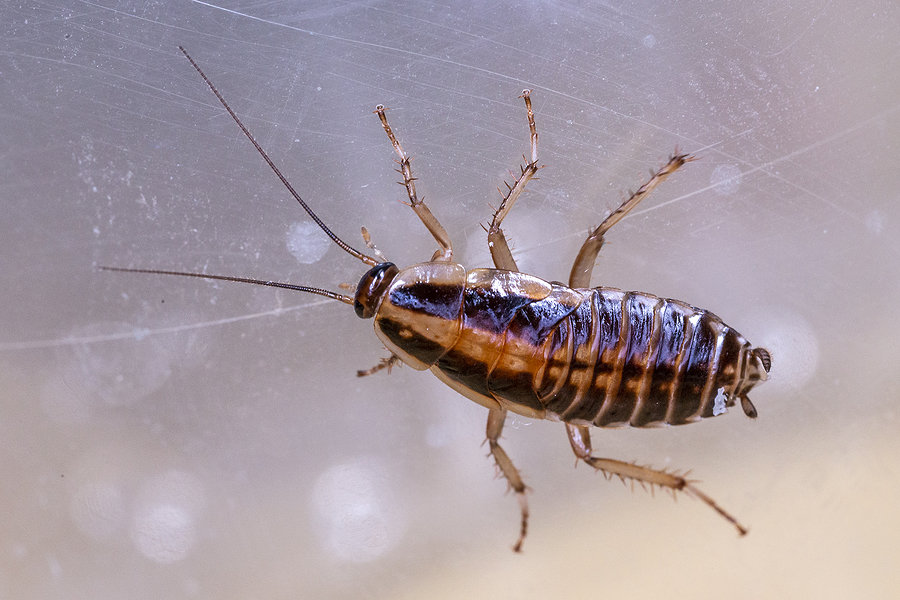
German roaches are the most common species of cockroach worldwide. They can be found infesting just about anywhere that humans occupy. How do you know if you have German cockroaches? What do they look like? Are these roaches dangerous to humans? Get the answers to these questions and more with our 411 on German cockroaches.
German roaches are flat and oval-shaped with 6 legs and a pair of antennae. They are smaller than other species of cockroaches, measuring between 1/2″ and 5/8″ in length. They are light brown to tan in color with 2 dark parallel stripes on their backs, just behind their heads. Females are darker than males. This species has wings but rarely fly; they prefer to run instead.
German cockroaches are an indoor pest, preferring warm, humid environments. They prefer temperatures between 85 and 95 degrees Fahrenheit with 90 to 95% humidity. They make their way indoors by hitchhiking on grocery bags, cardboard boxes, and used appliances. They are often found above refrigerators or other heat producing appliances, under sinks, and around water pipes in kitchens and bathrooms so they can be near food and water sources. They are found throughout the United States.
German roaches will eat almost anything. This includes soap, glue, toothpaste, food crumbs, and bindings of books.
German cockroaches have been linked to disease transmission in humans. As they crawl across fecal matter and other areas, they pick up germs on the spines of their legs and then transfer them to food and other surfaces. It has been proven that German cockroaches spread 33 different bacteria, 6 parasitic worms, and 7 other human pathogens. Their saliva, droppings, and even their dead bodies have proteins that can trigger allergies and increase asthma symptoms, especially in children.
If you spot one German roach in your home, it is highly likely that there are many more hiding in cracks and crevices. Females can lay up to 40 eggs at a time which then mature within about 2 months. The female carries the egg case for up to a month and drops it right before it hatches. They can breed up to 6 generations per year. Adult German roaches can live up to 200 days. This quick reproductive rate combined with their lack of natural predators makes a German cockroach infestation difficult to control.
German cockroaches aggregate in groups when they infest your home. You are likely to find their droppings in areas that they frequent. These droppings appear as small, dark, pepper-like material that is often found on counters and in drawers. Their feces can also stain, leaving dark spots and smears in the corners of rooms, along the tops of doors, and around small cracks and openings in walls. When these roaches infest in large numbers, they can also give off a mild, musty odor.
The first step in preventing a german cockroach infestation is practicing good hygiene. Keep your kitchen and bathroom clean, cleaning up crumbs and spills quickly. Sweep, mop, and vacuum often. Don’t leave any dirty dishes in the sink. Don’t leave pet food and water bowls out overnight. Seal all the openings in the exterior of your home, especially around utility pipes. Ventilate or consider enclosing your crawlspace.
If you suspect you have a cockroach infestation of any species, contact a professional pest control company who can provide you with an in-depth inspection and set you up with an appropriate treatment and prevention plan.
What You Can Expect from Lawn Care Service
What You Need to Know About Millipede Control
Watch out for the Stinging Pests!